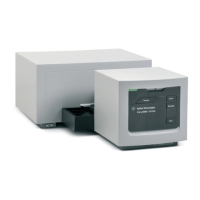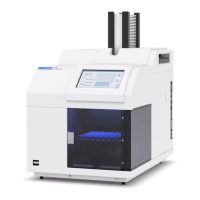Understanding Your Agilent ChemStation 23
Agilent ChemStation Features
1
About the ChemStation Software
• review signals and create ChemStation reports using either loaded methods
or the individual data file method DA.M, for example, to review manual
integration events
• reprocess sequence data (acquired sequence data from ChemStation Rev.
B.02.01 and later)
The following key graphical operations are possible in the Batch Review:
• define automatic or manual review and reprocess of (calibrated) data files
• recalibration of calibration table
• review compound tables of calibrated methods
• create specific batch reports
Data Analysis — Standard Reporting
A standard set of user-definable report styles for sample reporting can be
selected from the report specification screen. Every standard report type
contains standard information groups and optional information groups.
For more information on the report styles available, see “Using the
ChemStation Reports” on page 213.
Data Analysis — Specialized Reporting
Advanced reporting capabilities are also included in the ChemStation for
applications that require a more specialized set of reports. These include
statistics on separation quality, reports that include trend analysis between
samples and user-defined report layouts.
System Suitability Reports
System suitability reports enable users to report system performance
parameters for individual analyses. There are three variations, or styles of
these reports.
The standard template Performance report prints parameters for uncalibrated
methods that include:
• retention/migration time,

